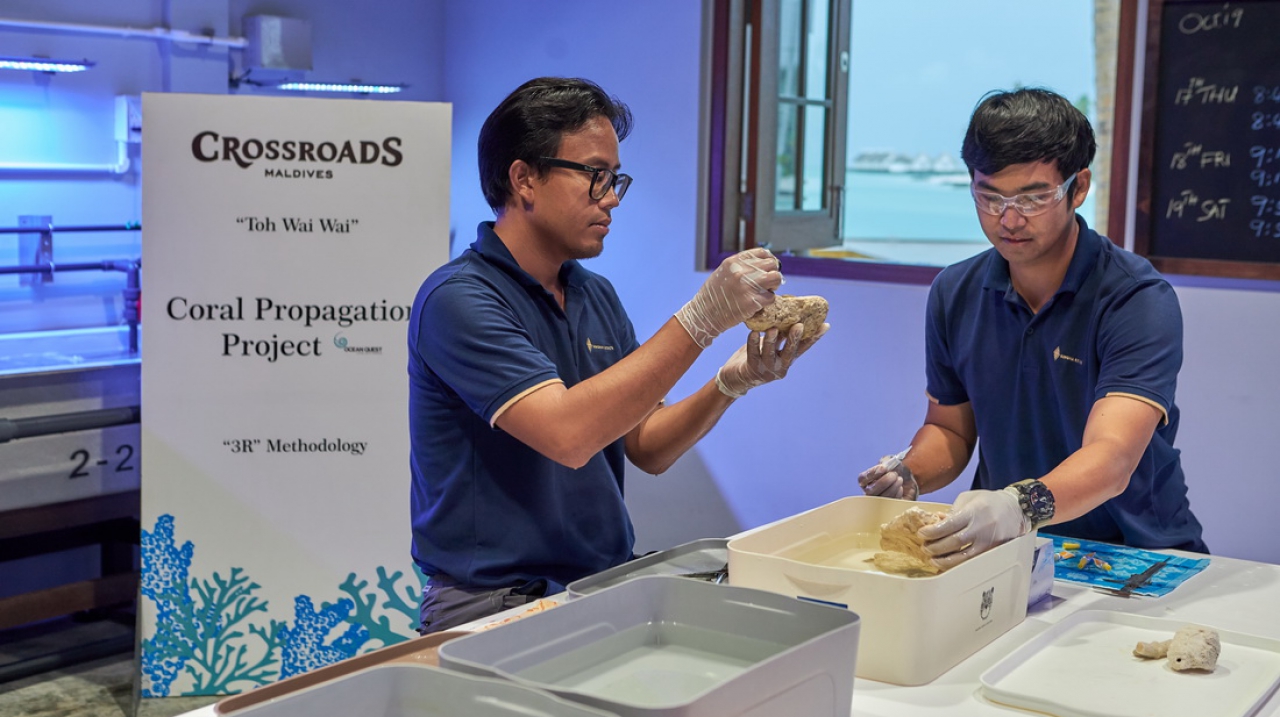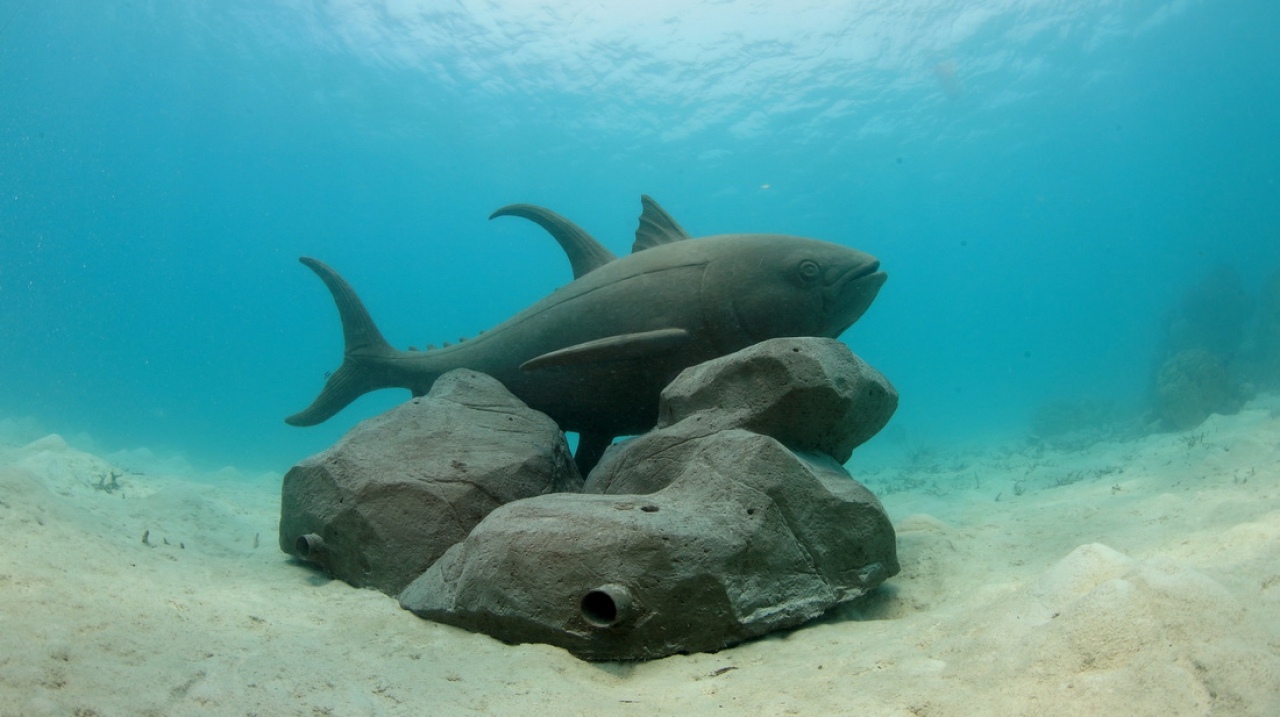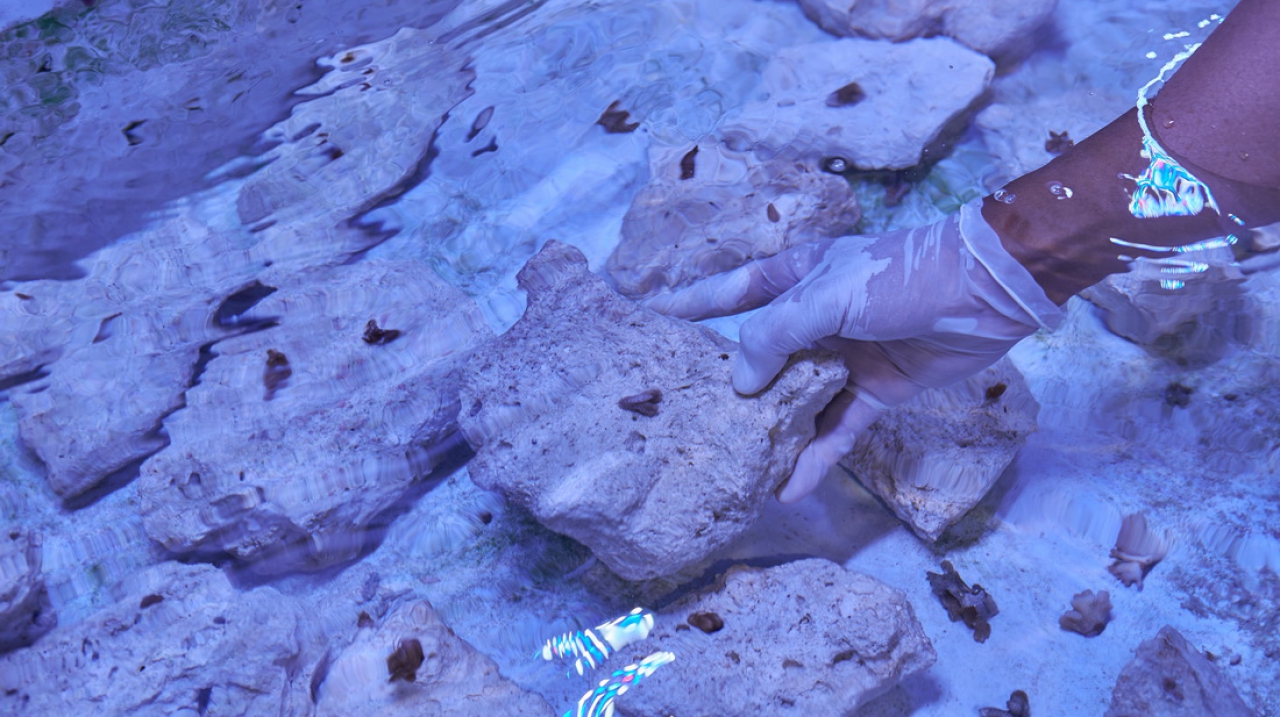- Home page
- Blogs Room
- 5 Zones to Educate You About Marine Life at Marine Discovery Centre
5 Zones to Educate You About Marine Life at Marine Discovery Centre
In a fast-changing world, there are many lessons that awaits your discovery. I believe learning is endless, especially when it comes to learning about living in harmony with other living organisms like “marine life”, which is full of many stories that you may have never known or heard of before at CROSSROADS Maldives.
We have the first-ever Marine Discovery Centre (MDC), built and managed by Singha Estate, to serve as a learning center that teaches about the ecosystem and marine life to the Maldivians as well as tourists. Entrance is free of charge. The Centre comprises 5 zones including:
Zone 1: Appropriate Ecotourism Zone
This zone is outdoors with an exhibit of information that teaches about appropriate ecotourism with respect to marine life and the ecosystem. The exhibition makes interesting recommendations about with ecotourism and activities to conserve and rehabilitate marine life both completed and ongoing.
Zone 2: Coral Reefs Zone
This zone exhibits and teaches about the fertile coral reef ecosystem that can be found around Emboodhoo Lagoon, which includes the biology of coral reefs, biodiversity of marine life along the reefs, as well as conservation and rehabilitation efforts of marine scientists.
Zone 3: Coral Propagation Zone
This area was set up as a lab for Coral Propagation, which is environmentally friendly. Its coral rehabilitation projects are supported by Ocean Quest Global organization. The Centre also offers annual coral propagation and rehabilitation activities.
Zone 4: Coral Planting and Nursing Zone
This area is for planting and nursing corals that were propagated in the Centre before they are planted in their natural rehabilitation habitats. In the future, it will be set up for planting and nursing clown fish found in the Maldives, which is the local fish.
Zone 5: Dive Training Around Underwater Sculptures Zone
The dive training centre zone surrounds the Hawksbill Turtle & Tuna sculptures which are beautiful and strong. It is suitable for basic snorkeling and SCUBA lessons, or for refresher courses before divers head to real dive sites to reduce damage to corals. It also serves as an area for coral planting. The two sculptures include:
- 1. The Hawksbill Turtle is situated in the shallow waters around the lagoon at a depth of about 2 meters for snorkeling activities. There are buoys that encloses the area for non-motor marine sports activities to ensure safety for tourists.
- 2. The Tuna - the national marine animal of the Maldives. There are 6 tuna sculptures situated at the depth of about 5 meters. There are buoys to mark the safe zone for divers. In additions, tourists can also participate in coral planting and rehabilitation activities in the Coral Propagation Project, which aims to plant corals around the sculptures, to decorate the marine ecosystem in the country to remain beautiful and sustainable. We believe that the Marine Discovery Centre offers the model learning experience about marine life and raising awareness and instilling the conscience for marine life conservation both in the Maldives and around the world.
- In addition, tourists can also participate in activities such as coral planting and contribute to coral reef restoration efforts through Coral Propagation activities, which involve cyclic coral planting techniques. This enhances the beauty and sustainability of the marine ecosystems in the country.
- We believe that Marine Discovery Centre will serve as a model for understanding the seas and fostering environmental conservation awareness, both within the Maldives and globally.







